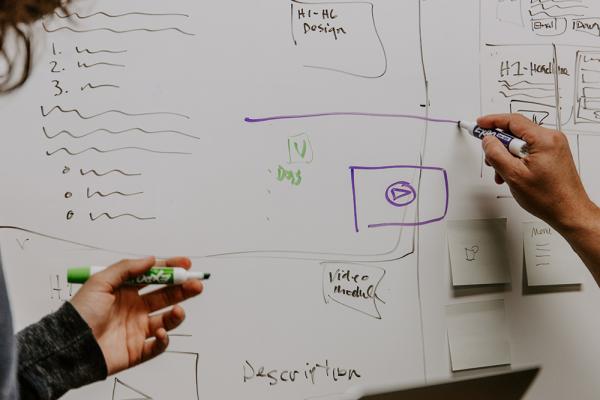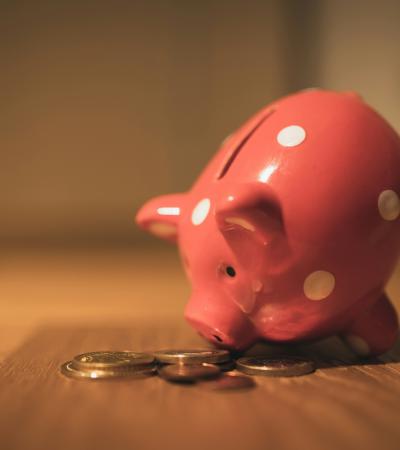Seeking out and applying for grants is time-consuming work, but the work really begins long before you start drafting that budget narrative.
Below are a few things you can start doing today that will make your next grant-writing endeavor go more smoothly (and, we hope, successfully).

Collect program data
A potential funder — whether it's your local supermarket donating snacks for a community discussion or a national grantmaking institution funding a $10,000 program launch — will want to know two main things: what you plan to do with their money and why it matters. To answer these questions properly, you'll need both good ideas and solid data.
If you don't already, start collecting data about all of your current programs. Consider things like attendance numbers, of course, but don't discount anecdotal information like survey responses or chatter at the circulation desk.
Talking to coworkers and patrons is a great way to obtain stories about how your programs affect their lives. You might want to keep a notebook to jot down positive feedback from patrons; these seemingly one-off comments can come in handy later when you're looking for a quote.
Also consider trends in the wider library or community. Did you see a jump in cookbook circulation following your last healthy eating program series? Did attendance surge in your teen room following a gaming program your library offered in conjunction with the park district? Have requests for job-seeking assistance spiked since a large employer announced layoffs? Make a note.
Check your budget numbers
Take a close look at your existing budget to determine what your needs truly are. Be realistic and detailed in your program plans. For a detailed resource about making a budget presentation, visit Making Budget Presentations in ALA's Advocacy Library.
Remember that budgeting funding also includes staff salary. If more hours need to be made available to complete the project in question, be mindful of the time constraints that may be involved in gaining that staff time. Determine the costs and benefits of the time necessary to accomplish your program.
Do your (internal) legwork
Identify the stakeholders within your organization that will need to support your fundraising endeavor. Do you need the blessing of your library director? Your Friends group or trustees? If this project is funded, will you need IT or custodial staff involved?
Once you have a list, make a plan to gain their support. An elevator speech that briefly states the "what" and "why" of your program will help you succinctly describe your idea. For example, “The most popular class accessed in our library's Universal Class database is Cake Decorating. Seventeen people attended our bread-baking class last spring, making it our second most popular program of the year so far, and cookbook circulation has increased for the past five years. A cake-decorating program series would build on this enthusiasm.”
Make sure the library management is informed of your plans and intentions before applying for grants or requesting funding from outside the library. There may be funding available or plans you are unaware of that could address your needs. Asking never hurts, and good communication within your organization is essential before seeking external funding.
Make yourself a cheat sheet
After you compile your program data, budget information and elevator speech, we suggest that you save it in a simple, one- or two-page boilerplate document. This cheat sheet will prevent you from having to reinvent the wheel next time you have to write a proposal or prepare for a donor meeting.
The one-pager (or two-pager) can also double as an internal communications tool, ensuring that all library staff are speaking consistently about the importance of the library, its programming and its impact on the community.
Find external support
Clearly defined partnerships can make the difference between a good grant applicatiom and a great one. Once you have identified and convinced stakeholders within your organization, it is time to look outward.
Find external stakeholders who may support you as you seek funding. These might be partners to assist with the program implementation; subject matter experts to speak or create content for a program; promotions partners to help you spread the word about a program offering; or in-kind donors to alleviate some of the costs. Clearly express your expectations and spell out the division of labor. And be sure to determine what will happen to your relationship if you don't receive the funding you seek.
Think through donor stewardship
Your work isn't over once you receive a donation. Once a relationship is developed with a funder, it is essential to maintain it — and that takes time.
Give some thought to how you will thank and recognize donors and how you will keep in touch with them to cultivate future gifts. Larger funders will likely have strict reporting guidelines, but smaller, local funders may have more lenient requirements. That doesn't let you off the hook, though.
Small touches can go a long way. Consider sending a few photos from an event, along with some positive feedback from attendees or statistics about how many people attended or how it made an impact. Cultivating relationships will create programming opportunities in the future.



